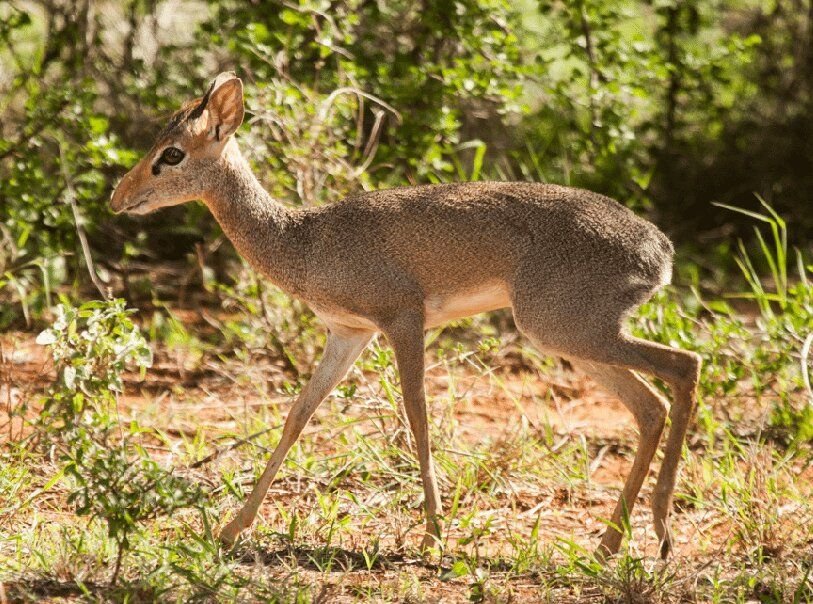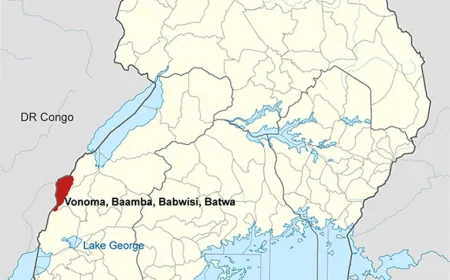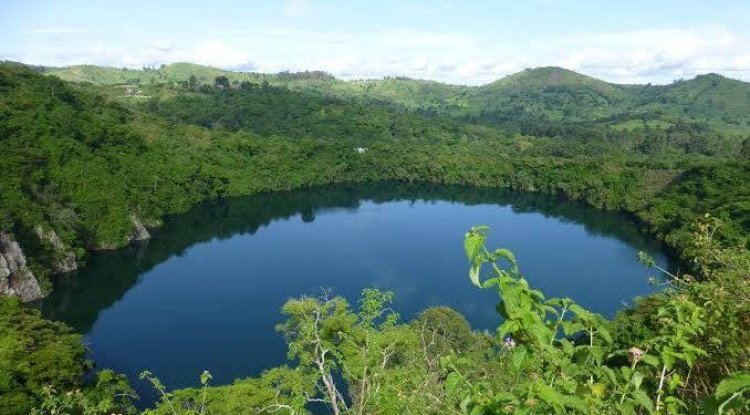Guenther’s dik-dik
In Uganda's savannahs, the Guenther's dik-dik (Madoqua guentheri) is the smallest antelope. It is difficult to notice this little antelope unless you are actively searching for it in the parched savannahs of Kidepo Valley National Park.

Günther's dik-dik (Madoqua guentheri) is a small antelope found in arid zones of East Africa.
One of the smallest ungulates in Africa, the Günther's dik-dik weighs about 3-5 kilograms (6.6-11.0 lb) at maturity. It has huge ears with white interiors, short heads with long necks, a yellowish-grey to reddish-brown coat, and black hooves. The inner thighs, belly, chin, breast, and throat are all cream or white. Short is the tail.
Although only males have horn cores, it can be challenging to determine gender at a distance. Women are larger and devoid of horns.
Reproduction in Günther's dik-dik
The calf is driven out at a young age to fend for itself since the species is monogamous; parents and calves do not establish family groups for extended periods of time. A single calf is only ever born at a time. The species can have late gestation periods and does not breed seasonally.
vocalisations
Although the species only has a small vocal repertoire, it has been demonstrated that it uses other species' warning sounds, for instance, responding with enhanced alertness or flight behaviour to the alarm calls of the white-bellied go-away-bird.
Günther's dik-dik Diet
Instead of grazing, Günther's dik-dik browses, mostly consuming the leaves, flowers, stems, fruits, and seeds of non-grass plants. Due of its small size, the species feeds on plants that are close to the ground. It is primarily a diurnal activity, peaking in the morning until mid-morning and the afternoon till after midnight.
Where to see the dik-dik antelope in Uganda
In Uganda's Kidepo Valley National Park, dik-dik can be found in the dry savannahs. The extremely dry northeastern corner is where Kidepo Valley is located. To enhance your chances of capturing images of this lovely antelope, you must schedule a longer visit because the dik-dik is one of the most difficult creatures to locate.
What's Your Reaction?
 Like
0
Like
0
 Dislike
0
Dislike
0
 Love
0
Love
0
 Funny
0
Funny
0
 Angry
0
Angry
0
 Sad
0
Sad
0
 Wow
0
Wow
0













































































